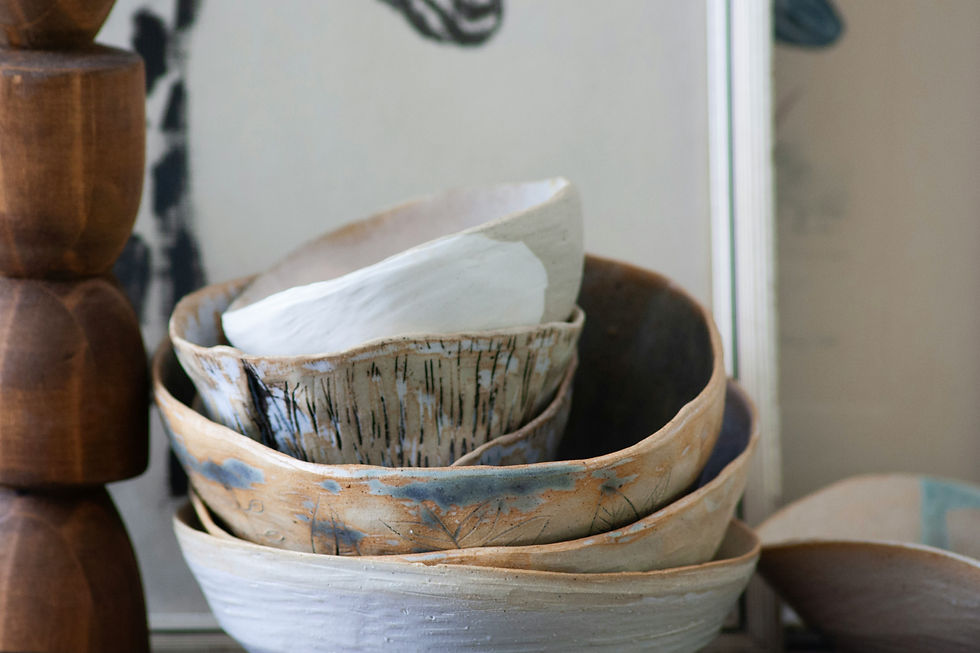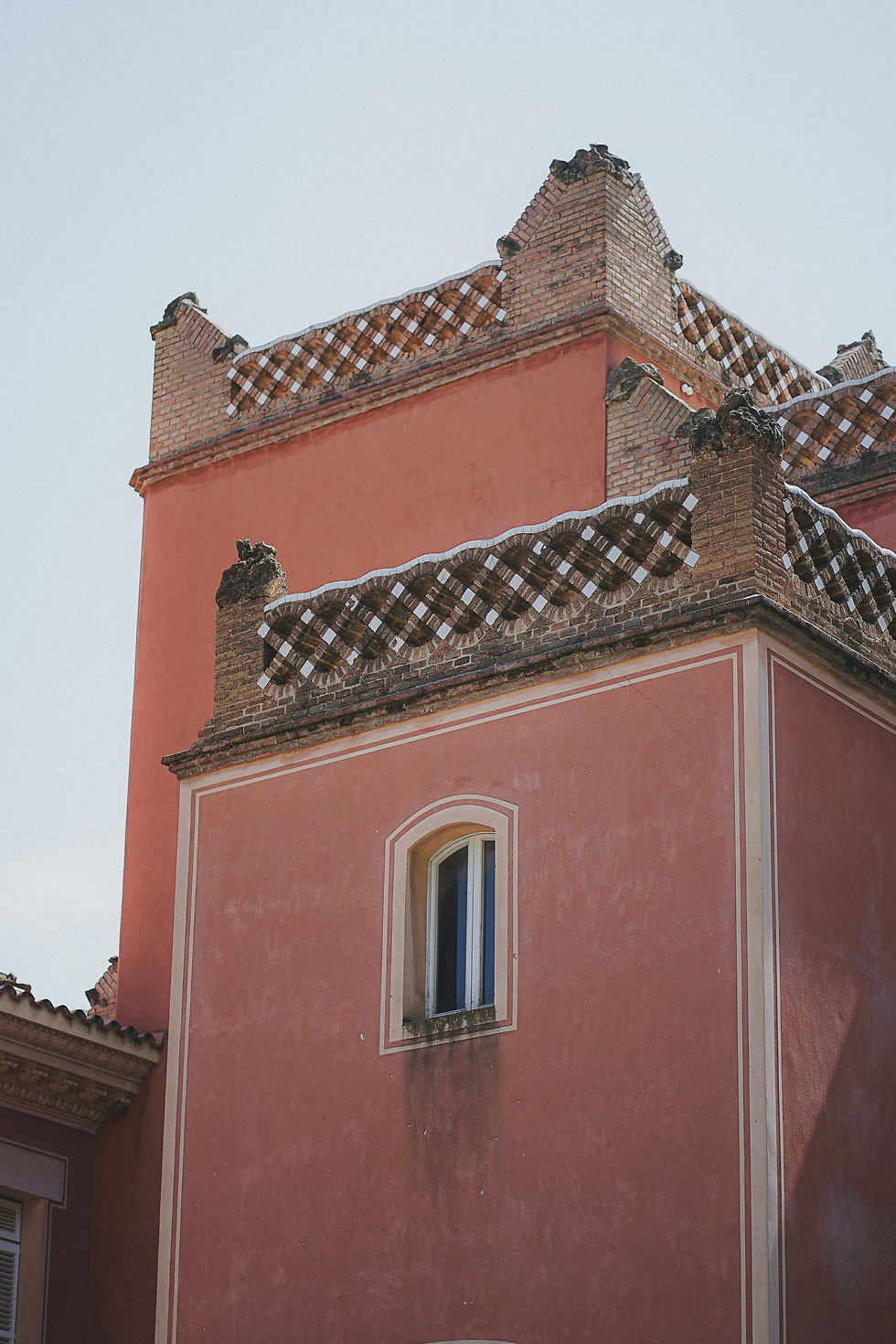Luxury in Design Lies in Texture, Time and Story
- Marieke Rijksen

- Sep 22
- 3 min read
Walk into a showroom and everything is flawless. Marble without a vein out of place. Linen without a crease. Walls painted smooth as glass. It’s impressive, yes — but often lifeless.
Step into a real home, though, and beauty lies elsewhere. In the plaster that catches light unevenly, in timber floorboards polished by footsteps, in a ceramic bowl whose rim is slightly irregular. These are the details that make a space feel alive.

The Japanese Spirit of Imperfection
Japan has given us some of the most poetic ways to think about imperfection. Kintsugi is the practice of repairing broken pottery with lacquer mixed with powdered gold. The crack is not hidden but illuminated, turning the scar into a story and the object into something more valuable than before.

Alongside it sits wabi-sabi, a philosophy that honours impermanence and incompleteness. It finds beauty in a weathered beam, a clay cup with a rough lip, or a blossom that lasts only a moment before it falls.
Wabi-sabi accepts that nothing lasts, nothing is finished, and nothing is perfect.
I’ve always loved the spirit behind these ideas. They aren’t about adding rustic charm for style’s sake, but about living with reality — finding quiet beauty in what already exists, cracks and all.

Imperfection Across Cultures
Once you notice it, you see the same instinct everywhere. In Spain, plaster walls ripple and terracotta tiles soften in the sun.
In Haarlem, canal houses lean a little, their uneven façades part of the city’s identity.

In Italy, Venetian plaster changes with the light, and Roman mosaics are treasured in fragments.

Morocco’s zellige tiles shimmer precisely because they are irregular, while the polished tadelakt walls of old riads still bear the marks of the artisan’s hand.

In Mexico, Talavera tiles and Huichol beadwork resist uniformity, each one a small variation on tradition.

In India, block-printed fabrics reveal the rhythm of the printer’s hand, and marble floors in palaces have been smoothed by centuries of footsteps.

Scandinavia embraces the way pine darkens with age, weaving rugs with slight irregularities that make them unique.

Persian rug makers often include a deliberate mistake, a humble acknowledgment that only the divine can achieve perfection.

The Andes hold the same belief in their woven cloth, where colour shifts and uneven textures tell human stories.

Even in France, chalky limewashed walls and antique linen sheets softened over decades remind us that beauty deepens with time.

Different places, different aesthetics — but the same truth. Imperfection is not a flaw. It is what gives design its depth.
Age, Patina and Story
Time itself becomes a designer. Leather grows darker, brass and copper tarnish, textiles fade, paint chalks, and stone steps dip from wear. These changes are not defects but records.
They remind us that design is not static but alive, constantly shaped by the people who live with it. Patina is slow luxury, and it cannot be faked convincingly because it is not only a look — it is the trace of years.

Starting With What You Have
This way of thinking also shifts how we update our homes. Instead of beginning with a shopping list, start with what you already own.
A tired dining chair can be upcycled with new fabric. A timber table scratched by years of meals can be sanded back and oiled into new life. A collection of mismatched ceramics may be more beautiful together than any perfect set bought in one go.
Upcycling isn’t only sustainable — it’s in the same spirit as kintsugi and wabi-sabi. It respects age, history and character.
Refreshing a home doesn’t mean erasing its past. Sometimes the most meaningful updates come from working with what’s already there.

Beyond Interiors
The philosophy of imperfection doesn’t end with design. Perfection in life is just as sterile as perfection in a showroom. What makes people compelling is texture — the scars, the changes, the layers of experience.
A flawless life might look good from a distance, but would be strangely empty to live. Just as we embrace patina in wood or unevenness in plaster, we can also learn to value the marks left by time on ourselves.

A Different Kind of Luxury
The invisible luxury in design isn’t flawless surfaces or rigid lines. It’s the hand of the maker, the traces of time, the stories that unfold in everyday use.
Homes become beautiful not because they resist change, but because they absorb it. Fabrics crease, walls soften, timber darkens, objects shift purpose — and life settles in. That is where true character lies.




